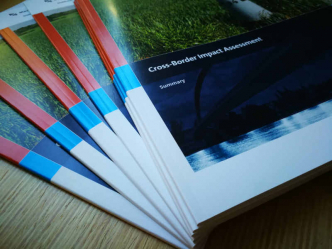Student dossier: The possible effects of the ‘Experiment closed cannabis chain’ on the Meuse-Rhine and Rhine-Meuse-North Euroregions
Saskia Marks
Gaia Lisi
Floor van der Meulen
Calumn Hamilton
Castor Comploj
On 10 October 2017, an unprecedented Pilot Project called “Experiment closed cannabis chain” was presented in the Netherlands. The coalition agreement introduces the pilot project to address the current backdoor problem. The aim is to study the effects of a possible legalisation of cannabis production, in particular on reducing crime and decreasing adverse health effects from consuming low-quality marijuana. The pilot project consists of an experiment decriminalising cannabis cultivation within strict parameters and a finite, pre-specified timeframe. This will take place in 6-10 municipalities in the Netherlands over a four-year period. The exact wording of the coalition agreement, in English, is as follows:
“The cabinet will introduce legislation, if possible within six months, on uniform experiments on tolerated cultivation of cannabis plants for recreational use. The experiments will be carried out in six to 10 large and medium-sized municipalities, with the aim of determining whether and how controlled cannabis can be legally supplied to coffee shops and what the effects are. After these experiments have been independently evaluated, the government will consider what action to take.”
This study provides an ex-ante impact assessment of this pilot project on two Euroregions. The geographical focus of the demarcated Euroregions is formally known as Meuse-Rhine and Rhine-Meuse-North. The main findings can be categorised under three different themes, namely European Integration, Sustainable/Socioeconomic Development and Euroregional Cohesion, respectively.
On the topic of European Integration, it can be argued that the pilot project will not promote the objectives of free movement under European Union law. The fact that specific municipalities will be selected for the pilot project could be considered a form of indirect discrimination between persons providing services, as protected by European law under Articles 49 and 56 TFEU. However, as there appears to be a valid reason for the violation of EU law (i.e. reducing organised crime and improving the quality sold in coffee shops), the new legislation can be justified under the rule of reason. Cultivated cannabis cannot be freely exported and therefore selection of growers could potentially infringe on freedom of establishment and freedom to provide services.
The analysis of the possible effects of such a policy at the Euroregional macroeconomic level is crucial for the scope of this impact assessment. While decriminalising the production of cannabis could in itself have a strong effect on employment trends and tax revenues on a national level, the effect could be even stronger in the Meuse-Rhine and Rhine-Meuse-North Euroregion because of its proximity to neighbouring countries Germany and Belgium. In the Euroregion in particular, participation in the pilot project aims to reduce drug tourism and drug nuisance caused by nationals of these countries. Although drug nuisance in the city of Maastricht has fallen over time from 58 to 39 per cent, it still remains relatively high in the Netherlands.
At the level of socio-economic development, the new legislation is likely to be beneficial. In 2015 alone, nearly 6,000 illegal cannabis plantations were seized across the Netherlands, estimated by the Dutch police to be only one-fifth of the total. Since 6.55 per cent of the Dutch population lives in the Euroregion, this would mean that there are almost 2,000 growers active in the Meuse-Rhine and Rhine-Meuse-North Euroregions, assuming that the level of illicit cannabis cultivation and related revenue in the Netherlands is independent of geographical location. Combined with a CBS estimate of €450 million for illegally produced marijuana in the Netherlands, or proportionately €29.5 million in the Euroregion, this would imply an upper limit estimate of €100 million per year for potential tax revenue from the decriminalisation of marijuana production in the Netherlands, or proportionately €6.55 million in the Euroregion. Moreover, if the cultivation of cannabis were to be tolerated under Dutch law, this would provide an annual contribution of €6000-8000 for each worker active in the cannabis production industry, provided they currently produce an added value close to the average in the Dutch economy.
On the theme of Euroregional cohesion, it was found that in the jurisdictions concerned (the Netherlands, Germany and Belgium) the cultivation, trade, sale and consumption of cannabis are illegal, although all these jurisdictions tolerate the possession and cultivation of small quantities of cannabis. The discrepancies between the different legal frameworks will now only be exacerbated by the pilot project. Moreover, the pilot project tests the limits of obligations within the international legal framework by enabling the cultivation of cannabis on a larger scale. However, the potential incompatibility with international obligations is mitigated by the experimental and temporary nature of the experiment. Finally, the paper finds that Belgium and Germany are more likely to step up their border controls to curb illicit cannabis cultivation and trafficking.
It is therefore clear that the pilot project, although only a national cannabis policy, has the potential to influence the Meuse-Rhine and Rhine-Meuse-North Euroregions in terms of European integration, sustainable/socioeconomic development and Euroregional cohesion.

